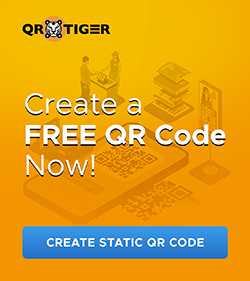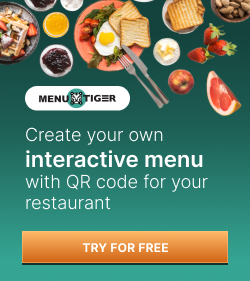QR Codes on Bottles Such as Wines, Beers & Cans

Using QR codes on bottles and cans of alcoholic drinks is a rising trend that gives a refreshing twist to plain old product containers and labels.
These codes can add value to bottles and cans; customers can do more with them than immediately throwing them away once they’ve consumed the contents.
Through this technology, buyers can access significant content whenever they interact with the brand.
You can use QR codes on your beverage business to build engagement and relationships between your customers and your business.
There are many online platforms for creating QR codes.
You just have to find the best QR code generator to offer various QR code solutions for your wine and bottle labels.
- 7 ways to use QR codes on bottles of wine and beers
- 1. Provide complete details of the drink
- 2. Gather customer reviews and product feedback
- 3. Share the brand’s vision and story
- 4. Add cocktail recipes that use your beverage as the main ingredient
- 5. Suggest DIY projects to recycle containers
- 6. Connect with consumers via social media
- 7. Link customers to your customer support
- QR Codes for vineyards
- Real-life use cases of QR codes on wine bottles, wineries, and vineyards
- How to use QR codes on vineyards
- How to make QR codes for your brewery or winery
- Best practices using a QR code generator
- Use QR codes for your vineyard, winery, and bottles
7 ways to use QR codes on bottles of wine and beers
How can you use a QR code on your wine or beer bottles and cans? Check out these clever ways for ideas and inspiration:
1. Provide complete details of the drink

QR codes are perfect for this.
You can store thorough product information without worrying about the space on your bottle label since you can adjust the size of your QR code when you print it.
Here’s one way to do it: Add a video QR code on beer bottles or wine to show the complete production process, from brewing to bottling.
This is an entertaining way to inform your consumers.
Or you may also use a file QR code to show consumers the list of ingredients that come with the product, such as the type of artificial sweeteners or calorie content—information that health-conscious customers would love to know.
2. Gather customer reviews and product feedback
QR codes can make it easier for consumers to provide feedback about the beverage.
You can create a survey or questionnaire on Google Forms.
After that, embed its link in a QR code so people can access, complete, and submit the form using their smartphones.
With this Google Form QR code solution, you no longer have to hand out printed forms and wait for people to fill them out.
This makes the feedback process much more convenient.
You won’t have to worry about collecting the data since all responses will reflect on Google Forms.
3. Share the brand’s vision and story

You can redirect end-users to your official website through the URL QR code, where they can learn more about your brand.
And to take it up a notch, use your website as a selling platform so customers can also browse and place orders online.
Providing customers easy access to your products after creating a connection with them will drive them to purchase. It will surely make a huge impact on your overall business performance.
4. Add cocktail recipes that use your beverage as the main ingredient
Getting consumers involved in a process is a good marketing strategy, as this feeds their curiosity.
To spike their interest, give them easy-to-follow cocktail recipes.
Add QR codes on beer bottles that lead them to video tutorials that will guide them on how to prepare fresh and fruity mixed drinks.
5. Suggest DIY projects to recycle containers
Humans use about 1.2 million plastic bottles every minute; most of the time, these bottles end up polluting bodies of water.
By looking at these figures alone, the harm plastic containers can do to marine life is higher as the years pass. Imagine the damage it can cause if it continues.
To initiate marine conservation, you can add QR codes on cans and bottles that lead to educational resources on proper waste management and easy-to-follow recycling methods.
Convert informative digital materials from PDF to QR code and include them on your packaging you can show your customers how they can do their part in saving the planet.
You can also create a personalized mobile landing page using the H5 QR code solution to share guides and tutorials on how to make Do-It-Yourself projects using bottles.
Place images, videos, and text on that landing page to give users enough guidance. Once done, you can place the QR codes on cans and labels.
For a plus factor, you can use the white label feature to use a URL of your choice.
6. Connect with consumers via social media

Promote your pages and market your products to a wider audience using the social media QR code.
When customers scan the code, it will lead them to a landing page containing all your social platforms, which they can all follow simultaneously.
The landing page contains buttons for each linked social media account.
Tapping these will bring the user to the corresponding platform.
Related: Social Media QR Code: Connect All Your Apps in One Scan
7. Link customers to your customer support
Customers love a brand that can quickly answer their queries and immediately cater to their needs.
Make your brand reachable using QR codes.
You can link your customers to your customer support team using the vCard QR code.
This QR code lets you share contact numbers, emails, and even sites of your customer service for easy customer access.
If you’re using email software for customer support, you can opt for the email QR code so users can quickly send their questions via their preferred email app.
QR Codes for vineyards

Where else? In vineyards.
Vineyard QR codes help vignerons or winemakers streamline processes from planting to harvesting and marketing their products.
They can even integrate with tools like a wine bar code scanner to enhance inventory tracking and ensure quality control.
This 2023, the US wine market revenue amounts to USD 56.65 billion and is expected to grow at a compound annual growth rate of 5.85% by 2027.
Hence, the growing demand for vineyard production to cater to this market.
That said, the stiff competition among wineries calls for a more strategic move, such as using QR codes to stand out.
The best part is that a QR code generator makes it easier for vintners or wine merchants to create quality and trusted QR codes for their businesses.
Take a sip and prepare to learn more.
Real-life use cases of QR codes on wine bottles, wineries, and vineyards
Harkness Edwards Vineyards (Kentucky, USA)
The manager of Harkness Edwards Vineyards shared with the digital magazine Vintner Mag that they use QR codes in their vineyard and wine products.
These QR codes relay more knowledge about wines, the history of their vineyard, and the family who started it.
Whitebarrel Winery (Virginia, USA)
With the onset of the pandemic, this winery from Virginia decided to launch an ordering app to follow health and safety protocols.
That move, however, wasn’t well-received by customers.
The winery then decided to use QR codes for customers to check the menu and order event tickets, which made all the difference.
Les Vins Georges Duboeuf (France)
This French brewery is renowned for its Beaujolais nouveau, a fruity and refreshing red wine sold in the same year it is harvested.
In 2021, they organized the “First Wine of the Harvest Cork Contest.”
They printed QR codes on each bottle; when users scanned the code, they had the chance to win limited-edition branded gifts.
The contest garnered 6,000 entries, proving how using wine QR codes can also be very effective in this type of business.
Siduri Wines (Sonoma County, USA)
This wine company released a web augmented reality experience for customers using QR codes.
This way, customers can learn more about the product in an interactive and entertaining way. As a result, they get to attract more customers.
Rhonéa (France)
This wine company from France has used QR codes on wine bottles right from the get-go.
They have been using QR codes to share more product details with consumers, such as the percentage of varieties in each blend, vinification specifics, and food pairing ideas.
These details can give consumers more knowledge, allowing them to appreciate the company’s products better.
The brand’s communications director said that the QR code performance was impressive and that they will continue using it in the coming years.
How to use QR codes on vineyards
Check some of these tips to use QR codes for vineyards effectively:
Share vineyard location

Simply embed the link of your Google map location in your QR code and share it online or with any printed material so that clients can have the exact road map towards your site.
Wine QR code for international clients
Wine production, when done right, can often lead to a global business.
It is an excellent opportunity to expand your market and create more sales.
To handle international clients, you can use the multi-URL QR code.
With its language-based redirection, you can redirect customers to landing pages in their local language.
This way, they can better understand your marketing material or website content.
Promote social media platforms
Social media has billions of users, and promoting your vineyard on these platforms can guarantee a greater reach.
Do so using the social media QR code.
When users scan the code, it will open a custom landing page of all your social media accounts that they can all instantly follow.
You won’t have to promote your sites individually; that way, it’s less hassle.
Share contact details
Among the top goal of any business owner is to gain investments and acquire clients.
You should share your contact details for business matters to facilitate smooth transactions and arrangements.
With the vCard QR code, you can share your digital business card and allow scanners to immediately save your details on their devices right after scanning.
This is more practical and sustainable than spending on printed vCards.
Appointment setting
To avoid the surge of customers visiting and viewing your vineyard, you can accept them via appointment. This way, you control the number of visitors and ensure your vines stay protected.
Allow visitors to book ahead of time using a digital appointment form via a Google form QR code.
When visitors scan the code, they can instantly fill out the appointment form and await your approval.
How to make QR codes for your brewery or winery
- Go to the free QR code generator online and log in to your account. You can quickly sign up for a freemium account if you don’t have one.
- Choose a QR code solution you want to generate.
- Provide the details required to proceed.
- Choose Dynamic QR for more functions, then click Generate QR code.
- Customize your QR code.
- Test your QR code on Android and iOS to check whether it works.
- Download your QR code. For better print quality, select SVG format.
Best practices using a QR code generator
Just because you’re using the best QR code software online doesn’t guarantee the quality of your QR codes. You should also know how to use it properly.
Follow these tips and tricks when creating or using QR codes:
1. Customize your QR code
To make an unforgettable impression about your QR code, customize it and make it visually attractive.
Since visual memory is more relied upon for information stored in our long-term memory, visual QR codes are a great addition to your beverage packaging.
To create attractive visual QR codes, here are things you must consider:
- Remember the rule of thumb: The foreground or pattern should be darker than the background.
- Avoid pale, light, or pastel colors.
- Avoid using plain-looking QR codes as it lessens the chance of attracting more scans.
- Make your QR code readable and simple yet pleasing to the eyes
- Do not invert the color of your QR code.
Following these can make attractive and more interactive beverage packaging in your visual QR codes.
2. Add your logo
A person can easily recognize your product by adding a logo, image, or icon to your QR code.
This can also help your QR code look professional, enticing, and legit.
Customers would also find it safe to scan your QR code since they know it will lead to your website, social media pages, or other business-related information.
3. Add a frame and call to action
If you want your QR code to stand out, make it different from other existing QR codes by using a frame and adding a call to action.
And worry not, for QR TIGER offers a wide array of frame templates.
Meanwhile, a compelling call to action (CTA) tells users what to do with the QR code.
This way, your QR code has more chances of getting engagement.
Top beverage companies such as Coca-Cola and Pepsi use QR codes to extend influence to digital citizens through witty CTAs such as “Sip and Scan” and “Kick Start Here.”
4. Consider the right size
Does size really matter? In the case of QR codes, it does.
QR codes—especially those in printed materials—must be big enough so smartphones can recognize and scan them, but remember that they should not take up the entire space.
The QR code’s size should depend on its environment.
A QR code on a flyer or a poster will surely have a different size than that on a billboard.
Here’s a pro tip: Save your QR code in SVG format so you can resize it without affecting its quality.
This way, you can adjust your QR code depending on where you’ll place it.
And on top of that, you must also consider the distance of the scanner from the print material.
Smartphones won’t recognize a QR code that’s not big enough or too far away.
The sizing formula for effective QR code scanning is the distance of the person who scans it divided by 10.
Suppose you want your QR code to be recognizable at a minimum distance of 10 feet; your QR code should be at least 1 meter in dimension.
5. Maintain a clutter-free QR code
QR codes come in two main categories: static and dynamic.
A static QR code stores data directly in the modules in its pattern; the bigger the data, the denser the pattern, which may lead to scanning delays or errors.
Meanwhile, a dynamic QR code stores a short URL that redirects to the actual data.
This feature allows this QR code to store large data without affecting its pattern.
Here’s more: with the short URL, you can still change or update your data without creating a new QR code.
To maintain a clean-looking QR code, it’s best to go for dynamic QR codes.
Use QR codes for your vineyard, winery, and bottles
Statista reports that the alcoholic drink market’s revenue will be $283 billion in 2023, with an expected 5.55% compound annual growth rate until 2027.
While these whopping numbers mean business is booming, it also entails stiff competition. And as such, companies must find a way to stand out from the rest.
Here’s where QR codes come into the picture.
This technology allows brands to innovate and elevate their production, operation, and promotion processes.
More importantly, QR codes on bottles and cans make your packaging more interactive.
These squares give a digital edge to your containers, and you can use them in various ways.
Many QR code platforms are available online today, each offering a unique set of features and functions.
But to guarantee the quality of your QR code campaigns, you must go for the best—QR TIGER.
This reliable software offers advanced QR code solutions, customization, and other handy features.
It’s also ISO 27001 certified and is GDPR compliant.
Sign up for a freemium account with the best QR code generator and start your QR code campaign today.

.gif)






